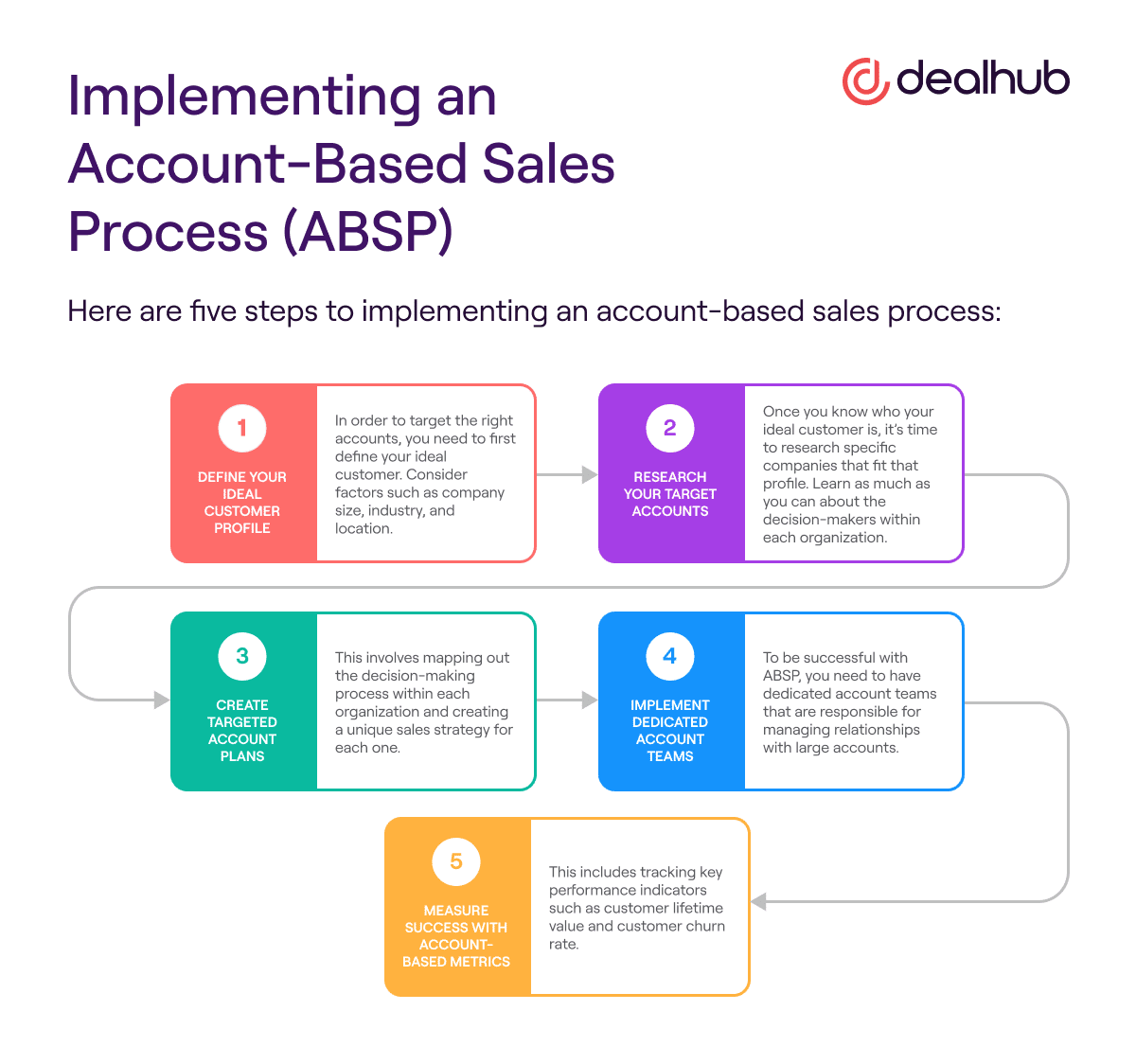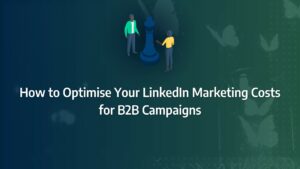What Exactly is Account-Based Selling?
What is Account-Based Selling?
Account-based selling (ABS) is a highly focused sales strategy that revolves around cultivating strong relationships with high-value accounts. Rather than casting a wide net, this approach is akin to using a precision spear, ensuring each engagement is targeted and tailored.
With ABS, sales teams dedicate significant time and effort to specific accounts, personalising their approach to meet the unique needs and goals of each target. This focused methodology allows for deeper, more meaningful interactions that ultimately drive bigger wins and stronger client relationships.
Benefits of Account-Based Selling
The primary advantage of account-based selling is the increased control it offers over your customer base. By narrowing your focus, your sales team can implement long-term strategies designed to win and retain high-value clients. This precision leads to numerous benefits, including:
- Higher Conversion Rates: ABS equips you to secure larger deals with more substantial clients. According to Gartner, 48% of organisations utilising an account-based strategy see a notable increase in average win rates. This success largely stems from the personalised attention given to each account.
- Better ROI: With heightened personalisation, ABS fosters greater customer engagement and improves the overall customer experience, leading to superior returns. Forrester reports that 89% of companies using an account-based approach have witnessed an improved return on investment (ROI).
- Enhanced Customer Loyalty: In my experience, personalised engagement through ABS not only drives higher conversion rates but also boosts customer loyalty. This approach creates long-term relationships that encourage repeat business and ongoing partnerships.
- Increased Cross-Selling and Upselling Opportunities: By investing the time to deeply understand each account’s unique needs and challenges, your team is better positioned to identify and capitalise on cross-selling and upselling opportunities. ABS offers insights into the broader ecosystem of customer pain points, enabling more effective, value-added sales.
- Superior Outcomes for Target Accounts: ABS focuses on delivering solutions tailored precisely to the customer’s needs. By thoroughly addressing specific pain points and goals, the customer feels that your product or service is designed just for them, fostering stronger connections and higher satisfaction.

Is Account-Based Selling Right for You?
Account-based selling (ABS) requires a significant investment—not just in terms of resources, but in company-wide commitment. It demands alignment from leadership right through to frontline sales teams, with everyone working seamlessly together to ensure its success. Before embarking on this journey, many business leaders will want to determine if account-based selling is the right fit for their organisation.
While ABS is a powerful strategy for many B2B enterprises, it thrives in particular scenarios. Below are key indicators that account-based selling could be the ideal approach for your business.
You Have Large Customers
Account-based selling is perfectly suited to B2B enterprises dealing with large clients. As discussed earlier, such customers often have multiple stakeholders involved in the buying process, making it essential to deploy a multi-pronged strategy. With ABS, a coordinated team effort ensures that every decision-maker is addressed, creating a more streamlined and targeted sales approach.
You Have Small-to-Medium-Sized Customers
Contrary to the common misconception, account-based selling is just as effective for small and medium-sized businesses as it is for large enterprises. In fact, smaller accounts often contain untapped potential, or ‘whitespace,’ that can be leveraged for recurring revenue. By identifying and focusing on these areas, your business can unlock new opportunities for growth.
A popular strategy among ABS practitioners is to take successful services and offerings designed for large clients and adapt them for smaller accounts. This not only enhances the efficiency of your revenue team but also helps uncover growth opportunities within these less developed segments.
You Have a Clear Ideal Customer Profile (ICP)
For ABS to be effective, a strong and well-defined ideal customer profile (ICP) is essential. Without a clear ICP, attempting to implement account-based selling becomes a challenge. However, if your organisation has a precise, data-driven ICP that is fully aligned across the company, your team will find ABS much easier to execute and scale.
How Do You Identify Target Accounts for Account-Based Selling?
Target Accounts
In account-based selling, target accounts are the companies or organisations that you aim to convert into customers. The definition of a target account can vary across businesses, as each company has its own approach to identifying and prioritising key accounts. Typically, a company will maintain a target list—a curated list of potential customers—used by sales teams to focus their efforts. Both sales and marketing teams need to work closely together to identify and engage these accounts, as understanding the meaning and metrics behind target accounts is critical for optimising the account-based selling strategy.
Establishing a well-defined account targeting strategy is essential for success. Even a simple, one-page account plan can provide significant value. Tools like a target account list template, account planning slides, or an account strategy plan in presentation form (PPT) enable companies to better target and convert leads. Additionally, businesses might need a detailed account selection plan to score and prioritise leads effectively. A robust target account strategy can significantly streamline processes, allowing companies to make the most of their resources and budget.
To identify best practices for account planning, it’s often useful to analyse how competitors and industry leaders approach targeting. Studying successful examples can provide insights into the most effective methods for identifying top accounts. By reviewing and refining your target account list based on these examples, you can stretch your marketing budget further and improve overall effectiveness. Regular reviews of your top accounts and segmenting them into tiers can also help ensure operational efficiency.

Account Tiers
Account tiers play a pivotal role in prioritising customers based on their likelihood to purchase. The process of tiering accounts varies by industry and company, but it’s essential to first understand your customer base before segmenting them into tiers. By conducting a thorough analysis, businesses can classify customers based on their potential to convert and segment them accordingly. This classification often includes existing and repeat customers, further enriching the data used for account-based selling strategies.
Account-based selling solutions or customer relationship management (CRM) tools can assist in gathering the necessary information to tier accounts effectively. Many platforms come equipped with account selection criteria that simplify this process. Properly setting account tiers allows businesses to allocate their marketing budget efficiently, focusing efforts on the accounts most likely to convert and make significant purchases.
It may take some time to establish the correct account tiers for your business. However, once this structure is in place, your team can focus on high-value Tier 1 accounts, while still engaging with Tier 2 and Tier 3 customers. These tiers enable sales teams to prioritise their efforts, ensuring that Tier 1 accounts receive the most attention, but that Tier 3 accounts are also nurtured and guided through the sales funnel. This balance ensures that your account-based selling strategy remains both targeted and scalable, driving long-term success.
5 Ways to Identify Target Accounts for Account-Based Selling
1. Leverage Your ABS Technology Stack
Utilising the full capabilities of your account-based selling tech stack is crucial to identifying the right accounts. Tools like the Terminus Cloud provide invaluable support by helping you discover accounts that align with your Ideal Customer Profile (ICP). Predictive analytics can further pinpoint which accounts are currently in-market and at what stage they are likely to make a purchase, allowing for more precise and timely engagement.
2. Mine Your Existing Data
Your CRM and marketing automation platform are treasure troves of data that often go underutilised. By mining this existing data, you can uncover valuable insights about current prospects, opportunities, and even existing customers who may offer untapped revenue potential. The wealth of information you already possess can guide your account-based selling efforts, helping you target the right prospects more effectively.
3. Analyse Your Competitors’ Customers
Understanding who your competitors are selling to can provide a valuable edge. You can automate this research using tools like iDatalabs or HG Data, or opt for manual methods, such as analysing LinkedIn groups, review sites, and online forums. These insights can reveal key accounts that might be a strong fit for your ICP, giving you an opportunity to position your solution as a superior alternative.
4. Examine Your Customers’ Competitors
Using business insights platforms like Owler, you can gain a comprehensive overview of your top customer accounts and their competitors. By exploring the profiles of these competitors, you may uncover accounts that align with your ICP but are currently underserved. Reaching out to these companies, you can highlight how your solution can address the gaps in their current strategies, presenting a compelling case for engagement.
5. Set Up Job Alerts for New Opportunities
If your offering targets an emerging category, job alerts can be a powerful tool for identifying potential new business. By subscribing to alerts based on your buyer personas’ job titles and other relevant keywords, you’ll be notified when companies hire for roles that signal they might soon be in-market for your solution. This proactive approach ensures that you can engage with accounts at the right moment in their buying journey.
Strategies for Implementing Account-Based Selling
1. Building Your Ideal Customer Profile (ICP)
The foundation of any successful account-based selling strategy lies in creating a precise Ideal Customer Profile (ICP). This is crucial for understanding how to communicate effectively with potential customers by addressing their specific needs and pain points. A well-crafted ICP enables your team to identify where your product or service can genuinely solve customer challenges.
While some companies may take a more informal approach, such as mood boards, the most effective ICPs are built on data. Analyse your closed-won and closed-lost deals to understand who your most valuable customers are and where they come from. Ideally, your ICP should be constructed using several years of historical data for better accuracy. If you have a long sales history, basing your analysis on the last three years will give a clearer picture. Prioritise metrics like Lifetime Value (LTV), as these will help identify your most profitable customers. You should also consider factors such as Time to Close (TTC) and Win Rate (WR), which highlight the most efficient and highest-converting deals.
2. Collaborating with Account-Based Marketing (ABM)
For account-based selling to reach its full potential, sales and marketing teams must operate in unison, rather than in silos. This is especially important because the needs of individual accounts are often nuanced, requiring tailored marketing collateral to resonate effectively with prospects. Sales representatives are on the front lines, directly interacting with customers and understanding their challenges. Their feedback is essential for shaping marketing efforts that truly address customer pain points.
Sales teams can help marketing answer critical questions, such as: “What content converts prospects most effectively?” or “What tone and language work best when engaging with different buyer personas?” A strong feedback loop between these departments ensures that marketing campaigns are continuously optimised to support account-based selling efforts. Additionally, nurturing prospects is a crucial component. Tools like 6Sense and Terminus can help your sales team target the right accounts and gain insights into market trends. However, it’s essential that sales reps regularly share their insights with the marketing team, ensuring that nurturing strategies remain relevant and effective.
3. Building Relationships with Key Stakeholders
In account-based selling, relationship-building is not just important—it’s critical. Since multiple decision-makers are often involved in B2B purchasing decisions, knowing who to engage within the target account is vital. Tools like Ebsta can analyse your past sales cycles to determine how many stakeholders were involved in successful deals and how deep within the organisation your sales efforts went.
Once this analysis is complete, you can begin mapping out the organisational structure of your target account, identifying key individuals to connect with. Platforms such as LinkedIn or advanced CRM tools can help pinpoint the right stakeholders. Building these relationships early on is crucial for gaining traction and advancing the sales process. By strategically engaging with the most influential people, you can create stronger bonds within the target company and drive the deal forward.
4. Driving Revenue with High-Quality Engagement
Consistent, high-quality engagement is the backbone of any successful account-based selling strategy. Every email, call, meeting, or demo represents an opportunity to build a stronger relationship with a potential customer. However, keeping track of these engagements can be challenging if your sales team is solely responsible for manually updating CRM data.
Fortunately, there are tools available that automatically track and record engagements, improving the accuracy of your CRM and freeing up your sales team to focus on more strategic tasks. Analysing the effectiveness of these engagements is equally important. Benchmark your interactions to identify what approaches work best for different stakeholders, and optimise your outreach accordingly. This insight can also inform the ongoing development of your ICP, ensuring that your profiles adapt alongside changing customer needs and behaviours. Tools that track metrics like email open rates, click-through rates, and ideal send times will further refine your strategy and help you achieve better results.
5. Enhancing Accountability with Greater Lifecycle Visibility
A robust account-based selling strategy relies on data-driven decisions and feedback from both sales and marketing departments. Building accountability is essential for continually refining your approach. Regularly assess your strategy by combining different types of reports and metrics, gaining deeper insights into its effectiveness. For example, comparing intent data against actual engagement can reveal where prospects are in the sales funnel, enabling you to improve your nurturing processes.
Moreover, both sales and marketing teams should share responsibility for these evaluations, ensuring full alignment between departments. By understanding their collective and individual roles, they can collaborate more effectively to achieve shared business goals.
Pitfalls and Hot Techniques for Account-Based Selling
How Content is Used in Account-Based Selling
Much like inbound marketing, content plays a crucial role in account-based selling by engaging specific audiences at various stages of the sales cycle. However, the content strategies in account-based selling must be even more targeted, aligning closely with the needs and pain points of individual accounts.
As previously highlighted, a successful account-based selling strategy requires collaboration across the entire organisation. Teams must work together to create audience-focused content that speaks directly to the various stakeholders within each target account. This collaboration ensures that the messaging resonates with the right people, at the right time.
Below are several content types and tactics that can be employed within an account-based selling framework, categorised by the level of effort required for execution:
Low-Effort Tactics
- Blog posts, infographics, and short videos: These content forms are relatively easy to produce and can be highly effective in educating and engaging target accounts.
- Social media engagement: A great way to stay on your prospects’ radar through consistent, light-touch interactions.
- Email: Personalised emails tailored to each account’s needs can help nurture relationships.
- Direct mail and voicemail: These channels can add a personal touch that stands out amidst digital communication.
- Reports and data research: Presenting relevant insights can establish your authority and provide real value to your prospects.
Medium-Effort Tactics
- Workshops: Engaging prospects through targeted workshops provides an opportunity for deeper interaction and education.
- Business cases: Showcasing detailed case studies can demonstrate how your solution has solved similar problems for other businesses.
- Webinars: Hosting webinars tailored to account-specific challenges allows for direct engagement and education.
- Custom reports: Delivering personalised data and insights can position your team as an expert that understands the client’s unique challenges.
High-Effort Tactics
- Product trials: Offering accounts the chance to trial your solution can be highly persuasive, allowing them to see the value firsthand.
- Company workshops: In-depth workshops that delve into the specific needs of a target account can build strong relationships and deepen trust.
Content Following the Sale
The role of content doesn’t end once a sale is closed—nurturing the relationship post-sale is essential to maintaining customer loyalty and satisfaction. Account-based selling is not a one-off transaction but an ongoing relationship, and ensuring customer success is key to driving renewals, upgrades, and cross-selling opportunities.
Engaging your customers with valuable content long after the initial sale ensures they remain satisfied and invested in your solution. Here’s how to keep that engagement high:
- Training sessions: Help your customers get the most out of your products by offering ongoing training that enhances their understanding and usage.
- Executive check-ins: Regular meetings, preferably on a quarterly basis, between senior leadership on both sides, can strengthen the partnership and address any evolving needs.
- User events: Hosting events brings your customers together, creating a sense of community around your brand while increasing product exposure and excitement.
Pitfalls to Avoid in Account-Based Selling
- Establish Clear Objectives: Before embarking on an account-based selling strategy, it’s essential to define clear objectives. For example, if your aim is to drive enterprise-level sales, set specific targets and KPIs to measure success. Without a clear focus, your efforts can become disjointed and ineffective.
- Prioritise Data Quality: Outdated or inaccurate data can derail even the most well-crafted account-based selling strategy. Imagine reaching out to a key account only to find the contact information is incorrect. To avoid such scenarios, regularly audit your CRM and ensure that your data remains accurate and up-to-date.
- Foster Cross-Team Collaboration: For account-based selling to succeed, seamless collaboration between sales and marketing is critical. Without alignment, you risk missing key opportunities. For example, marketing may focus on a different sector than the sales team, leading to a disjointed approach. Ensure both teams are aligned with the same target accounts and strategies.
- Emphasise Personalisation: Sending a generic message to a high-priority account can be detrimental. Personalisation is the cornerstone of account-based selling, and failure to tailor your content to the specific pain points of each account can result in disengagement. Craft personalised messages that demonstrate a deep understanding of each account’s unique challenges.
- Commit to Continuous Optimisation: Launching an account-based selling campaign without tracking its performance is a recipe for failure. Regularly analyse your data to assess what’s working and what isn’t. Without ongoing optimisation, you risk continuing with strategies that may not be delivering the best results.
- Develop a Well-Defined Strategy: Account-based selling requires a concrete strategy with clearly defined goals, target segments, and action plans. Without a well-defined strategy, your efforts will lack direction, making it difficult to measure success or adjust tactics effectively.







